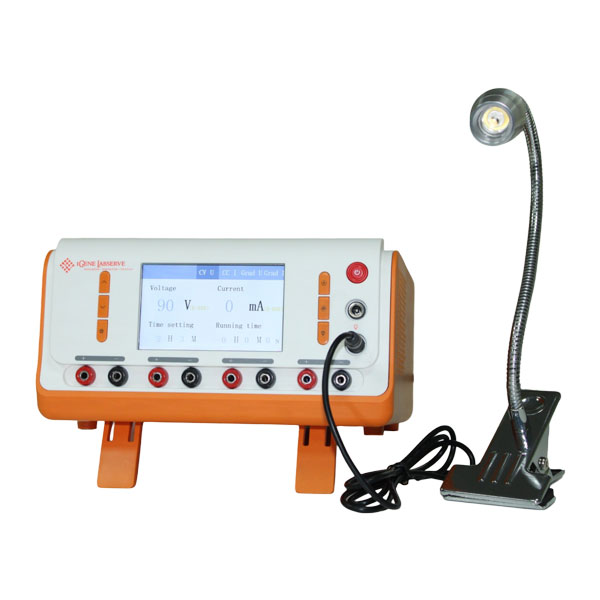Electrophoresis is one of the most fundamental techniques that are widely used in biochemistry, biology, and all the genetic laboratories across the world. From separating DNA, RNA, and protein fragments, one of the most critical procedures maintaining a consistent power supply to drive the gel. Typically, the electrophoresis power supply provides electric current to aid the movement of molecules through the gel. Now, what makes the decision confusing for laboratory owners is whether to invest in a digital or analog power supply.
Once you understand the two different types of power supplies, it becomes easier to choose the right equipment. Here are the key distinctions between analog and digital electrophoresis power supplies, including their benefits, features, and limitations but before that you need to know what the system is all about:
What is electrophoresis power supply?
Before delving into the comparison of digital and analog power supplies for electrophoresis, you need to know what it actually does. This device is responsible for supplying current and voltage to the electrophoresis gel apparatus. The electrical field that the power supply creates instil charge in the molecules like DNA, RNA, and proteins and allow them to move through the gel matrix. Eventually, the polyacrylamide and agarose gels separate the molecules based on the charge and size.

Differences between digital and analog power supplies
When it comes to the differences between digital and analog power supplies, here is what you need to know:
Analog electrophoresis power supply
Analog power supply is a conventional technology and come with mechanical dials and knobs to set the current and voltage manually. These devices rely on analog circuits to regulate the power. They also have basic displays only like LED indicators and needle gauges. Here are the pros and cons you need to consider:
Pros
- Reliability
The analog electrophoresis power supply has circuits that are simple as far as the functionality is concerned and has fewer electronic components. Naturally, they are highly durable and long-lasting.
- Cost-effective
These models cost lesser, making them the right choice for teaching laboratories and institutions that run a shoestring budget.
- Simplicity
It is relatively easier to understand the specifications and functionality of analog units. There is no menu system or software that requires special hands with expertise to run. All you need is to turn the dial and the system is ready to operate.
Cons
- Precision is limited
Due to limited precision, you cannot set exact currents and voltages, so small variations may occur, depending on the preciseness of the knobs.
- No complex protocols
Analog power supplies do not run on complex protocols. So, everything needs to be handled manually.
- Basic safety features
Lacks the modern safety features like automatic shutdown, overload protection, and error alerts.
Digital Power supplies
The digital electrophoresis power supply is a contemporary approach in which microprocessors and digital interfaces regulate the delivery of power. These devices come with touch panels, digital displays, and buttons, allowing more precision.
Pros
- More control and precision
Digital systems allow you to set exact current, voltage, and timings, often to the smallest points in decimals.
- Improved safety features
With short-circuit protection, automatic fault detectors, overheat sensors, and alerts, these devices are safer for users.
- Data logging
A few units are capable of logging data over time and connect to computers and networks.
- Programmable functions
Several digital models can store multiple protocols, execute the functions timely, and adjust voltages.
Cons
- Higher cost
Digital power supplies are expensive due to the additional components and features.
- Complexity
The learning curve is steep, especially when the device comprises multiple modes and programmable sequences.
- Increased chances of failure
Due to inclusion of software, microprocessors, and touchscreens, there may be more parts that may incur failure.
Analog power supplies are appropriate for teaching labs where students learn the basics of gel electrophoresis, for low-complexity applications, labs that function on low budget, and users preferring simplicity and manual control. On the other hand, the digital power supplies are appropriate for research labs performing advanced electrophoresis protocols. High-throughput labs need repeatability and consistency, and users that need automation, safety, and data tracking.
Both analog and digital electrophoresis power supplies are good choices based on your needs. While analog is simple and cost-effective while digital offers precision, safety, and flexibility. At iGene Labserve, one of the leading companies that manufacture high-end lab equipment, we believe in balancing cost-effectiveness and implement versatility in your laboratory. Explore the website here https://www.igenels.com/ for more information.

